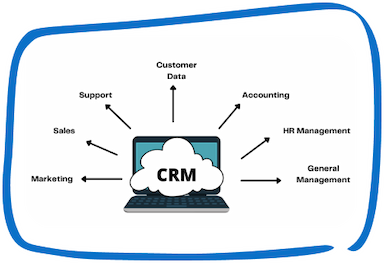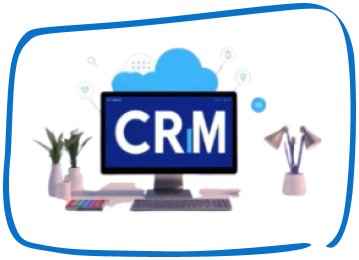It might be challenging to recall all the terms used in accounting because there are so many of them. But don’t worry, we’ve compiled a list of the 21 most crucial ones for your small business.
If you own a small business or work for yourself, your skill is probably in running your company, not in deciphering complex financial concepts or business jargon.
But it’s crucial to comprehend this fundamental accounting terminology to properly manage your company and your money.
The top 21 accounting terms are shown below
Without much accounting knowledge, managing your accounts is now simpler than ever thanks to small business accounting software.
It’s in your best interest to comprehend this fundamental accounting and also business terminology and their definitions.
1. A period of accounting
Financial statements contain financial statements for a specified period. Depending on the business, an accounting period may be one month, one quarter, or one year.
2. Asset
Anything a firm owns is considered an asset.
An item is regarded as an asset if it has monetary value and converted into cash.
Assets include things like money, machinery as well as real estate.
3. Liability
Liabilities are amounts that a company owes to another party.
If a buddy lends you money, you are responsible for returning the money or fulfilling the terms of the loan, such as buying the friend ice cream.
Payroll obligations to employees and loan payments to the bank are two examples of liabilities in a business.
4. Accounts payable
A/P represents the money that your company owes for goods and services. A/P can include anything from your power payment to your office’s rent.
Additionally, for these goods and services, you often receive a bill from the seller, which is typically payable within 30 days.
5. Accounts receivable
As the name implies, accounts receivable refers to the money your business owes you for the goods and services you provide.
When you create an invoice, the invoice amount is added to your A/R balance.
Knowing the size of your accounts receivable is essential to figuring out your accounts receivable turnover, which helps predict and also gains insightful business knowledge.
6. Expenses
Expenses are the charges incurred when conducting business.
Cost of goods sold (COGS) and operating expenses are two distinct types of expenses.
COGS stands for the direct cost of producing goods and also services.
Operating costs include things like paying rent and selling as indirect costs of production.
If your company sells scooters, your cost of goods sold (COGS) would include the cost of the scooters’ wheels and the wages paid to the people who made them, while your operating expenditures would include the cost of distribution and rent.
7. Revenue
Revenue is the amount of money a business makes by selling goods or rendering services.
A company’s revenue is the money it makes from whatever commercial activity it engages in.
Additionally, keep in mind that revenue does not account for expenses. Only the money was made.
8. Accrual accounting
Accounting for accrual transactions instead of transactions in relation to payments or receipts is a more efficient way of keeping track of transactions.
Accrual accounting is used by most typical organizations. You must utilize the accrual accounting approach if you have employees.
9. Bank Reconciliation
By using this procedure, you may make sure that your general ledger (G/L) accounts and your month-end bank balance are in sync.
Finding and recording unaccounted-for bank costs and also incorrect bank posting is the aim of the bank reconciliation process.
Every month, a bank reconciliation performed for all open bank accounts.
10. Capital
A business’s capital is the means by which it generates the goods and services it offers.
Capital can be provided as equity by selling stock or as debt, which might take the form of a bank loan or credit line. A brand name is an example of an intangible form of capital.
11. Cash accounting
A cash account records expenses when they are paid for rather than when they are incurred.
A majority of sole proprietors and small businesses use cash accounting, but if you have employees, you must use accrual accounting.
12. Certified Public Accountant
The American Institute of Certified Public Accountants (AICPA) awards the designation of “Certified Public Accountant,” or “CPA,” to candidates who complete an exam and meet the prerequisites for education and experience.
CPAs can specialize in a wide range of fields, including auditing, bookkeeping, forensic accounting as well as information technology, and an ethics code binds them.
But the majority are renowned for their knowledge of income taxes.
13. Cost of goods sold
A cost of goods sold is what you pay to create or acquire the commodities you sell.
This can range from the price of a product you buy to resell to the cost of labor as well as materials.
Additionally, to accurately calculate your gross and net profit, it’s crucial to keep track of your COGS.
14. Net profit
Your gross profit less all other costs equals your net profit. You may also refer to this phrase as your bottom line, your earnings, or your net income.
15. Credit
Credit is the name given to an accounting entry made on the right side of any accounting transaction.
An asset account will see a debit entry whereas a liabilities or equity account will experience an increase.
16. Debit
A debit entry appears on the left side of any accounting transaction, whereas a credit entry appears on the right side.
A debit entry will increase to an expense or asset account while a decrease to a liability or equity account.
17. Depreciation
Depreciation shows how frequently a specific asset utilized over time.
It can take various forms, but straight-line depreciation is the most fundamental.
Depreciation expenses are claimed annually until the asset has fully depreciated.
Declining balance, double-declining balance, and sum-of-the-year’s-digits are further depreciation techniques.
18. Equity
Equity is the owner’s interest in the company.
It is the gap between your balance sheet’s assets and liabilities that determines your equity. The difference, which might be a positive or negative amount, shows the value of your company.
Additionally, your company’s value decreases if your equity is negative.
19. Financial statements
Investors, auditors, and also creditors use financial statements to assess the financial health of a firm by reporting on its financial performance.
There are three fundamental financial statements:
- Balance report.
- Income declaration.
- Financial statement.
20. General ledger(G/L)
The general ledger (G/L) records all of your accounting transactions.
No matter whether you use accounting software or do your accounting manually, your G/L contains all of your company’s financial transactions.
Additionally, this G/L report in Wave Accounting summarizes all transactions for each G/L account.
21. Gross profit
Putting it simply, gross profit is what remains after deducting the cost of providing or producing a product.
Take your income and also deduct the cost of goods sold to arrive at your gross profit. Your gross profit is the remainder of your revenue.
Speak with Our Team!
4.9 Stars
1k+ reviews on






